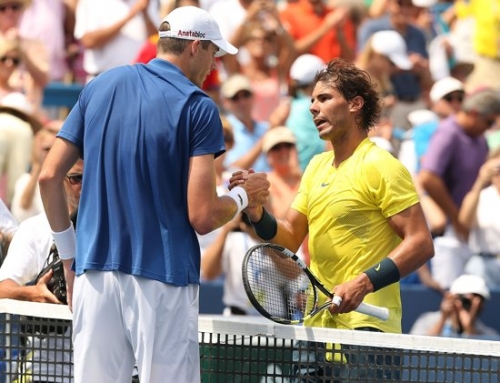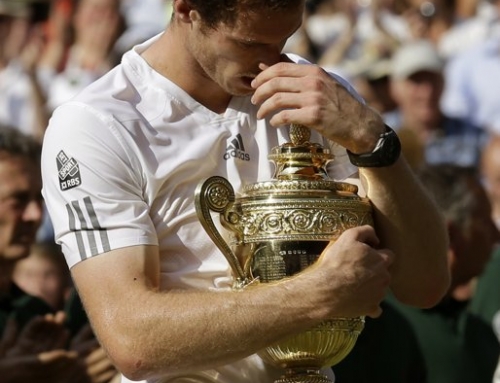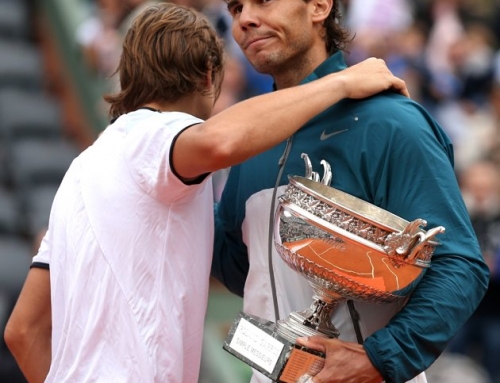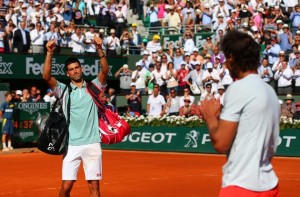 To me, one of the best matches played between Djokovic and Nadal was the finals of the 2012 Australian Open final. Some felt it dragged on and on, and certainly, played over 6 hours with numerous breaks between points, the match could have been played at a zippier pace.
To me, one of the best matches played between Djokovic and Nadal was the finals of the 2012 Australian Open final. Some felt it dragged on and on, and certainly, played over 6 hours with numerous breaks between points, the match could have been played at a zippier pace.
However, after the grueling 2011 US Open final, one where Djokovic’s back gave him trouble pretty much until the end of the year, Djokovic seemed to rethink his strategy to play Nadal. In 2011, Djokovic seemed perfectly happy playing patient steady ball, rallies going 20-30 shots and either waiting for an error, or to go for a winner, deep in the rallies.
Nadal’s strategy is to wait for a good shot to attack, and he’s often conservative in that approach. He’ll sometimes bypass big shots, especially against big hitters realizing that they will often make errors first. Against Djokovic, he realized that he needs to be more aggressive, to make Djokovic move more, and to get him on the defensive.
To that end, Djokovic also wanted to keep points shorter and also wanted to be more aggressive. The problem with playing Rafa too aggressive is you’re the one taking the chances, and you’re the one likely to make mistakes.
In the French Open semi, Djokovic tried to play a lot of hard shots down the line from his backhand to Rafa’s backhand, and to hit hard shots to the center of the court. The big problem he had was missing too often, either wide of the sideline or deep past the baseline.
Djokovic had much better success going inside out to the Rafa forehand, but seemed reluctant to aim for that shot too much, despite finding success.
Rafa, by contrast, when he’s pressed wide to his forehand, often hits the shot deep crosscourt, but lately, in the past few months, he’s been trying to hit that shot down the line, and end the point. Against Djokovic, if his inside out forehand wasn’t to the sidelines and fell short, then Rafa often had time to redirect down the line for the winner. Rafa also wanted to hit good shots with his forehand down the line to force Djokovic to slice off the one hander and then take control of the point.
Rafa has also been working on getting good angle on his crosscourt backhand. In the past, if Rafa had a shallow backhand, say hit halfway between the center line and the right side line, Rafa would hit that shot back the same line, feeling he lacked the angle to put the ball away. For a long time, this was a nice neutral shot Federer would hit just to keep the point going before attempting a hard crosscourt backhand or perhaps an inside out forehand.
Rafa often does well because he can play defense, whether slicing his backhand (something Djokovic avoided almost completely) or hitting high loopers which bought him time. Djokovic found no good way to attack those shots, as almost no one ever takes that out of the air.
Early in the first two sets, Rafa was trying to move Djokovic side to side much like Murray has done in the past year and a half, and for a while, he was able to stay this aggressive, but as the match went longer, it seemed less important to do this because he could simply play defense, and wait for shots where he could, say, go down the line.
While Djokovic had a 2-0 lead in the fifth set, he was the aggressor, and the problem with being the aggressor against a great defender, you are prone to errors, and Djokovic ran into that problem at 7-8, making four errors in a row to lose serve and the match, while Nadal doesn’t feel the need to be nearly as aggressive, playing a balance of defense and aggression.



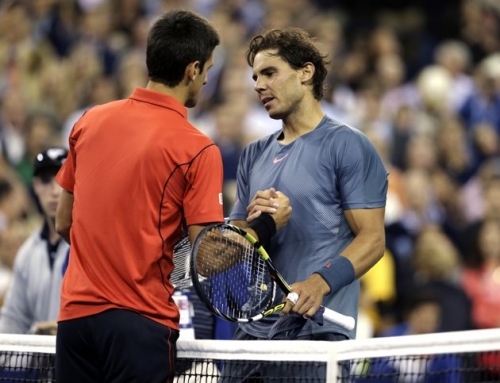
![[US Open Men’s Final] Can Djokovic beat Nadal in the finals?](https://www.essentialtennis.com/wp-content/uploads/2013/09/20130909djokovic-500x383.jpg)
